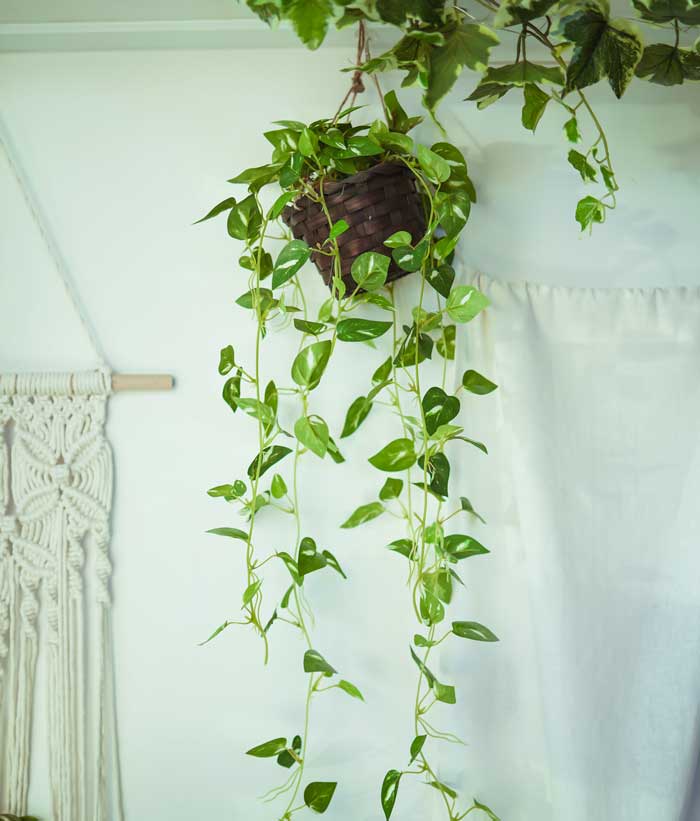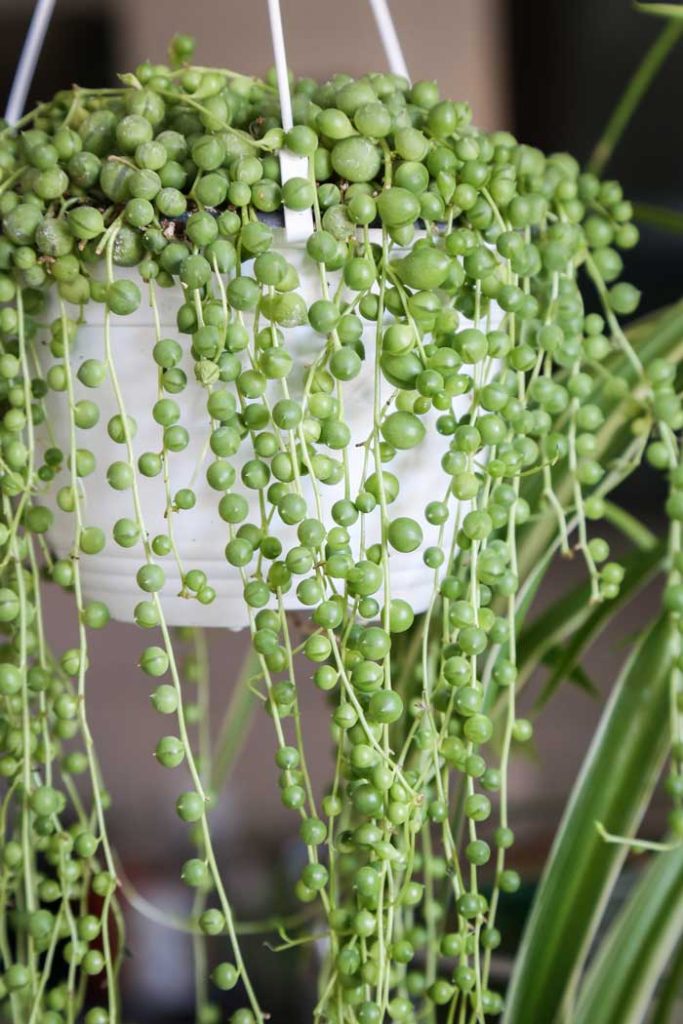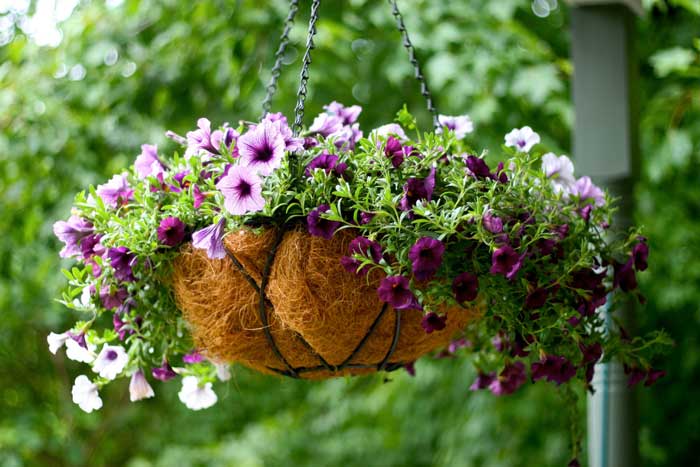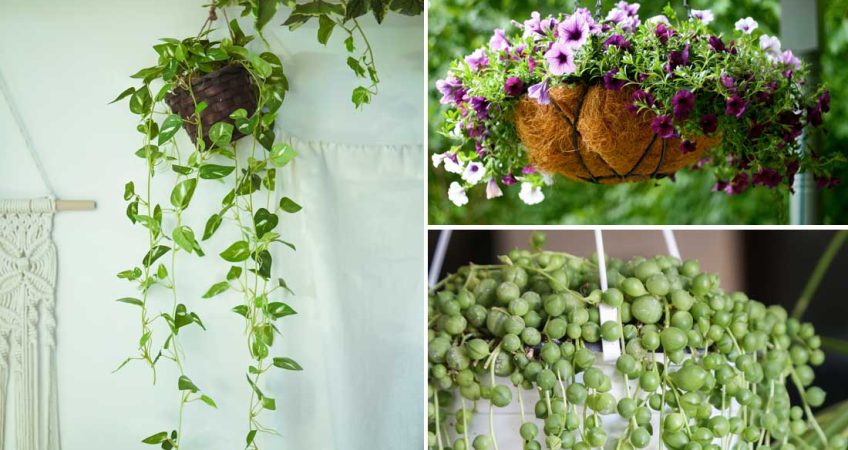Crafting DIY Hanging Planters
Creating your own hanging planters provides an easy opportunity to express your creativity. Traditional macramé holders with ceramic pots are always charming, but don’t shy away from more innovative ideas. For instance, you could upcycle old birdcages, ladders, or even colanders into unique hanging planters.
Integrating Hanging Plants into Landscape Design
In landscape design, hanging plants can be used in various ways. They can hang from pergolas or balcony railings, from trees, or even form a living wall indoors. The goal is to match the plant’s needs with the aesthetic of the space, while ensuring that the draining water won’t cause issues such as mildew indoors.

Understanding Hanging Plant Growth Habits
Plants have adapted in fascinating ways to their environments, with hanging or trailing growth habits being one such adaptation. An interesting example of this is seen in the world of epiphytes.
Epiphytes are plants that grow on other plants, usually trees, without being parasitic. They include species such as some orchids, bromeliads, and even some types of ferns. These plants have developed special roots designed to absorb moisture and nutrients from the surrounding air and rainfall. This adaptation allows them to live high up in the forest canopy, far away from the soil, basking in the abundant light available.
There are also plenty of naturally ground-dwelling plants and flowers that thrive in hanging planters such as petunias, senecios (such as string of pearls) and pothos.
Plants with a trailing habit look amazing, but that doesn’t mean you can’t include small plants with upright growth habits in the centre – don’t be afraid to get creative!
Choosing the Right Hanging Plants in NZ
Assessing Your Environment for Trailing Plant Types (Outdoor and Indoor Plant Needs)
When it comes to choosing the right hanging plants, understanding your environment is crucial. Light exposure, humidity, and temperature all affect a plant’s health and growth.
For example, a Boston fern (Nephrolepis exaltata) loves a humid environment, making it a great choice for bathrooms or kitchens. On the other hand, a spider plant (Chlorophytum comosum) requires bright but indirect light, making it a perfect addition to a well-lit living room or patio.
Popular Hanging Plants and their Requirements
You’ve got plenty of options available that are perfect for hanging baskets. Take the string of pearls (Senecio rowleyanus), for instance. This eye-catching plant, with its many green bead-like leaves, prefers a sunny location with well-draining soil.
In contrast, the devil’s ivy or golden pothos (Epipremnum aureum) is a is a trailing plant that can cope with lower light conditions, making it a popular choice for less sunny indoor spaces. Understanding these individual needs is key to cultivating a thriving hanging garden in your own space.

Care and Maintenance for Hanging Plants
Choosing the Right Potting Mix and Hanging Basket Materials
The choice of potting mix and basket materials plays a pivotal role in the overall health and appearance of your hanging plants. Wire baskets with liners made from sphagnum moss or coconut coir allow for superior air circulation, which is beneficial to some plants’ root health. Plastic baskets, on the other hand, are better at retaining moisture, making them ideal for plants that prefer wetter conditions.
The potting mix should be light and well-draining to prevent waterlogging in hanging baskets. A pot mix that contains perlite, vermiculite, or river sand can promote good drainage, while peat moss or coconut coir can help retain necessary moisture. Avoid using garden soil as it tends to compact over time, impeding root growth and restricting access to essential nutrients.
Watering, Feeding, and General Upkeep of Hanging Baskets
Watering and feeding routines can differ greatly depending on the type of plant. However, most hanging plants prefer their soil to be consistently moist but not waterlogged. Overwatering can lead to root rot, a common issue with indoor plants. Overdrying can cause the potting mix to become hydrophobic.
During the growing season, feed your plants with a balanced, water-soluble fertiliser. Be cautious not to over-fertilise as this can lead to salt build-up, which can harm the roots. Organic fertilisers can be smelly, so beware when using them indoors.
Regular pruning and repotting are also required. Pruning promotes bushier growth and helps maintain the plant’s shape, while repotting may be necessary once the plant outgrows its container.
Creative Display Ideas for Hanging Plants
Crafting DIY Hanging Planters
Creating your own hanging planters provides an easy opportunity to express your creativity. Traditional macramé holders with ceramic pots are always charming, but don’t shy away from more innovative ideas. For instance, you could upcycle old birdcages, ladders, or even colanders into unique hanging planters.
Integrating Hanging Plants into Landscape Design
In landscape design, hanging plants can be used in various ways. They can hang from pergolas or balcony railings, from trees, or even form a living wall indoors. The goal is to match the plant’s needs with the aesthetic of the space, while ensuring that the draining water won’t cause issues such as mildew indoors.

The Multifaceted Benefits of Hanging Plants
Enhancing Health and Well-being
Research has shown that the presence of plants, including hanging plants, can have numerous health benefits. They can reduce stress levels, boost mood, and improve concentration. In fact, many hospitals now incorporate plants and herbs into their interior design due to these healing properties.
Boosting Environmental Sustainability
Hanging plants also contribute to environmental sustainability by promoting biodiversity and purifying the air. They provide habitat for beneficial insects and birds, helping to maintain a balanced ecosystem. Additionally, hanging plants can help reduce energy consumption by providing shade and cooling the surrounding environment.
Conclusion
Hanging plants aren’t just decorative elements but contributors to our well-being and environmental sustainability. By understanding their specific needs and growth habits, we can create beautiful, thriving hanging gardens in our homes or professional spaces. So why not experiment with different species and innovative display methods? Discover the joy and benefits these plants bring.

